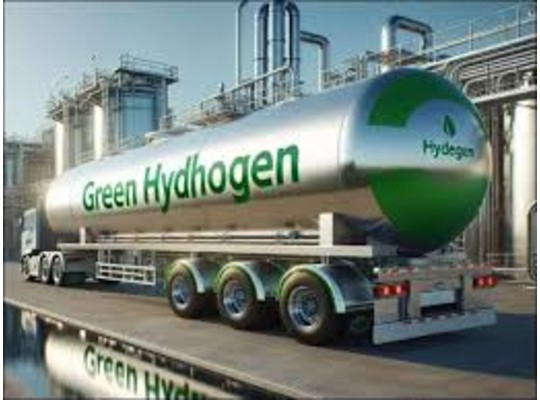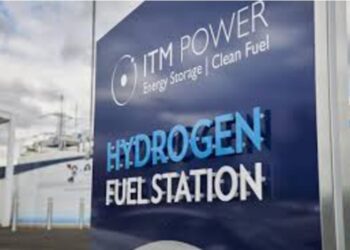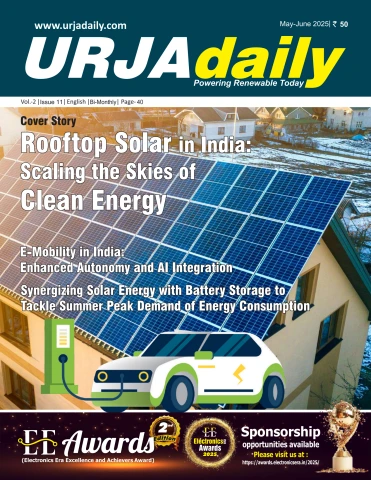A greener tomorrow is not a distant dream but a journey we undertake today. Green hydrogen, the clean energy powerhouse derived from splitting water using renewable electricity, is rapidly emerging as a transformative force in the global energy landscape. Its promise lies not just in decarbonising heavy industries like steel and cement but also in enhancing energy resilience, securing a sustainable future, and contributing to global climate goals. For India and the European Union (EU), green hydrogen is not just a fuel; it is a catalyst for energy collaboration that could redefine the future of clean energy across borders.
Forging a sustainable alliance – At the heart of this transformative potential is the groundbreaking partnership between India and the EU. Together, they aim to harness their respective strengths: India’s vast renewable energy resources and the EU’s technological prowess. This partnership was solidified at the 10th India-EU Energy Panel in Brussels, where both regions outlined a comprehensive framework for advancing green hydrogen, which included infrastructure development, regulatory cooperation, and enhanced supply chains. The third phase of the India-EU Clean Energy and Climate Partnership (2025–2028) focuses on green hydrogen, offshore wind energy, electricity market integration, energy efficiency and climate diplomacy, driving a sustainable, interconnected energy future.
The National Green Hydrogen Mission, approved by India’s Union Cabinet in January 2023 with a significant INR 19,744 crore outlay, aims to position India as a global hub for green hydrogen production, export, and use. With ambitious targets of producing 5 million metric tonnes of green hydrogen annually by 2030, India hopes to not only reduce its reliance on fossil fuels but also create an investment pool worth INR 8 trillion and generate 600,000 new jobs. Meanwhile, the EU Hydrogen Strategy envisions 40 gigawatts (GW) of electrolyser capacity by 2030 under its Green Deal and the production of up to 10 million tonnes of renewable hydrogen annually. It has committed to the development of hydrogen valleys and cross-border energy networks.
Potential of hydrogen – Unlike grey hydrogen, which generates carbon emissions during production, or blue hydrogen, which uses carbon capture technology, green hydrogen is produced through electrolysis, using renewable energy sources. This process involves splitting water into hydrogen and oxygen, with no carbon emissions. As a clean, zero-emission alternative to fossil fuels, green hydrogen is poised to decarbonise hard-to-abate sectors like transportation, industry, and heavy manufacturing while also supporting energy storage and grid stability.
Industry projections reveal the immense potential of green hydrogen. According to BloombergNEF (BNEF), hydrogen storage could account for up to 24 percent of global electricity demand by 2050, while prices are expected to fall dramatically, making green hydrogen competitive with natural gas. The hydrogen extracted from natural gas costs between US$1.11 and US$2.35 per kilogram (kg).
BNEF’s Hydrogen Economy Outlook predicts that renewable hydrogen could cost US$0.8 to US$1.6 per kg by 2050, making it competitive with natural gas prices in regions like Brazil, China, India, Germany, and Scandinavia.
Scaling India’s hydrogen production – India, with its vast renewable energy potential, provides an ideal environment for scaling green hydrogen production, while the EU offers advanced technological capabilities and a well-established hydrogen market, creating a perfect opportunity for partnership between the two. Industry leaders like Siemens Energy and Thyssenkrupp are already eyeing investment opportunities in India, underscoring this synergy. The European Investment Bank has committed to supporting India’s National Green Hydrogen Mission. With a focus on technology transfer, Research and Development (R&D) collaboration, and infrastructure development, both regions are paving the way for a robust hydrogen economy.
On the Indian side, major corporations like Reliance Industries are positioning themselves as key players in the green hydrogen market, forging international partnerships to boost production capacity. Reliance New Energy Limited has teamed up with Denmark’s Stiesdal A/S to manufacture HydroGen Electrolysers in India, driving down the cost of hydrogen production significantly.
Building tomorrow’s foundations
Building a global hydrogen value chain requires substantial infrastructure investment. Electrolysers, storage facilities, pipelines and fuel cells must be constructed at an unprecedented scale to facilitate the widespread adoption of green hydrogen. According to the International Energy Agency (IEA), as global spending on hydrogen projects increases, reaching US$3.5 billion in 2023, India and the EU are collaborating on joint ventures to advance hydrogen infrastructure.
For example, the GreenH Electrolysis project, a partnership between Spain’s H2B2 Electrolysis Technologies and India’s GR Promoter Group, is manufacturing Proton Exchange Membrane (PEM) electrolysers in India. Additionally, Greenko Group and John Cockerill are building a US$ 500 million electrolyser gigafactory in India, aiming to produce electrolysers at the lowest cost and hasten India’s green hydrogen ambitions.
Moreover, launched in 2021 by the European Commission and the EU High Representative, the Global Gateway strategy is crucial for advancing green hydrogen. It bridges the investment gap for green hydrogen projects while enhancing clean, smart and secure links across digital, transport, and energy sectors. For instance, the Global Gateway Africa-Europe Investment Package supports Africa’s green and digital recovery with 150 billion euros, aiming to deploy renewable energy and green hydrogen, targeting 40 GW of electrolyser capacity by 2030. Similarly, it can also bolster the India-EU partnership, funding green hydrogen projects and fostering international cooperation.
Overcoming challenges
High cost: The India-EU green hydrogen collaboration is not without its challenges. High initial costs of production, particularly the cost of electrolysers and storage infrastructure, remain a significant barrier. Despite advances in electrolyser technology, the production of green hydrogen remains costly compared to traditional fossil fuels, making it uneconomical. Since 2010, however, the capital cost of electrolysis has decreased by 60 percent, leading to a reduction in hydrogen production costs from US$ 10-15 per kg to US$ 4-6 per kg. This decline in cost over the years is attributed to advancements in electrolyser technology, economies of scale, and increased investments in renewable energy sources. According to BNEF, India and China are the only countries where green hydrogen is expected to become cost-competitive with grey hydrogen by 2040.
India and the EU can work together to reduce the cost of hydrogen production through joint research and development initiatives aimed at improving electrolyser efficiency. For instance, developing next-generation ion exchange membranes and fuel cell designs can contribute to increased cost savings while addressing environmental concerns. These advancements will help further reduce the declining cost of green hydrogen production, making it more economically viable. This cost reduction will significantly strengthen the EU-India partnership by encouraging greater investment and adoption of green hydrogen technologies.
Sluggish demand: While the high cost of green hydrogen has limited its demand, this challenge is compounded by industries’ reluctance to shift their processes to accommodate green hydrogen. The India-Middle East-Europe Economic Corridor (IMEC), announced during the G20 Summit in September 2023, provides a promising solution. By establishing an export corridor, the IMEC can expand green hydrogen markets beyond domestic borders, addressing demand limitations. With its strategic connectivity through an eastern corridor linking India to the Arabian Gulf and a northern corridor connecting the Gulf to Europe, along with plans for pipelines dedicated to green hydrogen export, the IMEC offers a pathway to scale production, reduce costs, and drive global adoption.
Regulatory disparities: Regulatory disparities between India and the EU pose significant challenges to green hydrogen trade and technology transfer. For instance, the EU’s Carbon Border Adjustment Mechanism could increase costs for Indian exports, while differing energy market structures may hinder cross-border trade. However, progress is underway, as seen in the November 2024 roadmap, which seeks to align regulatory frameworks by streamlining policies on infrastructure, technology cooperation, and supply chain development.
Envisioning sustainability: In this pivotal moment of energy transition, the India-EU collaboration on green hydrogen emerges as a transformative force. By combining their strengths in renewable energy, technology, and innovation, they are not merely addressing today’s energy challenges but also laying the groundwork for a sustainable, decarbonised tomorrow—one where green hydrogen unlocks a resilient, energy-secure future for generations to come.













